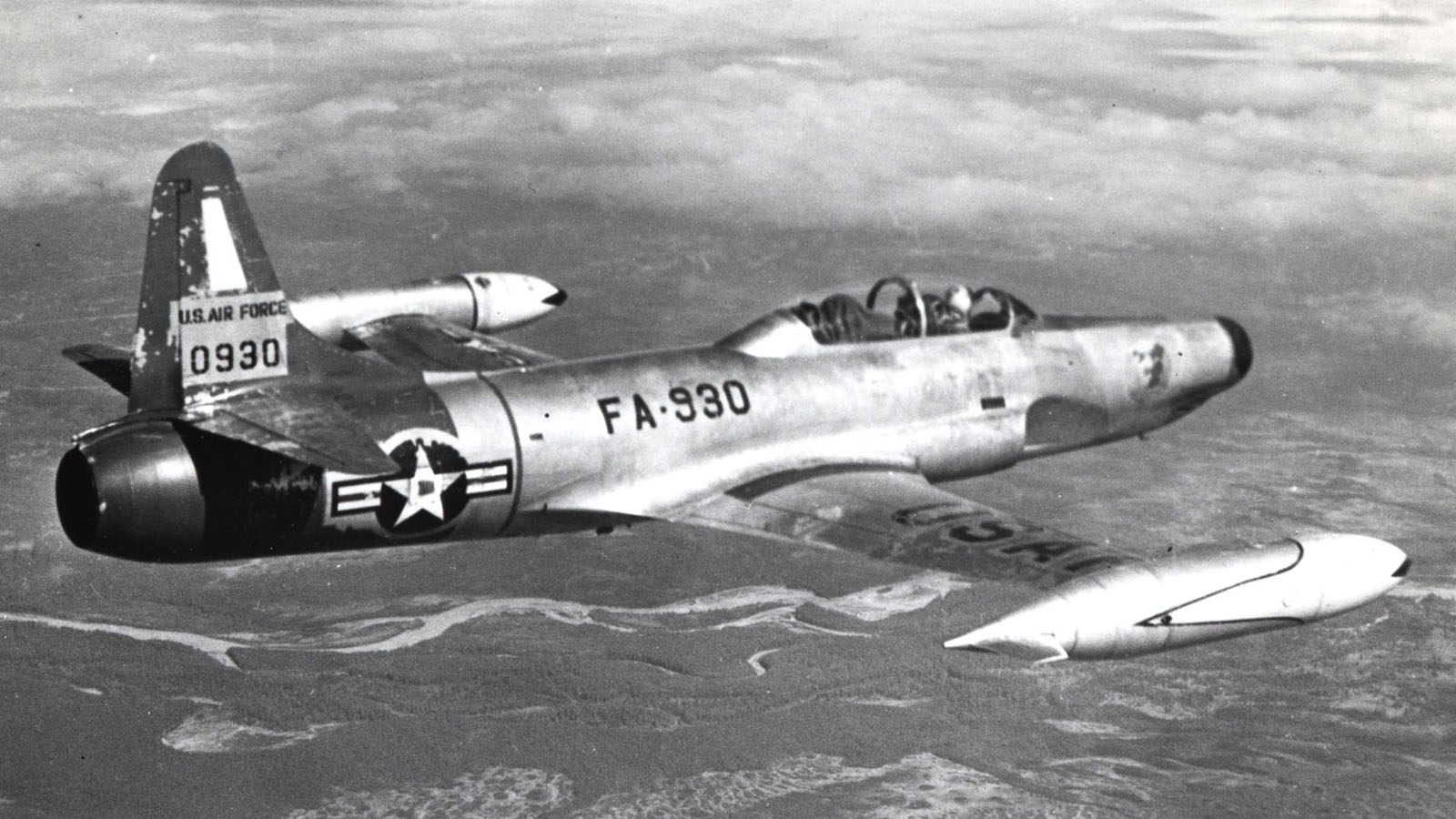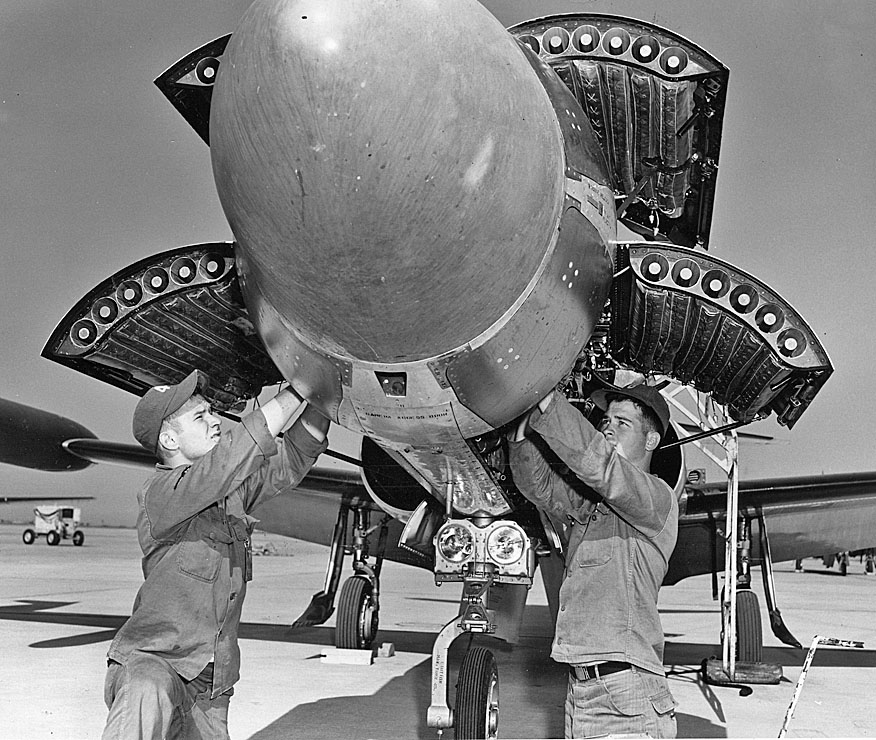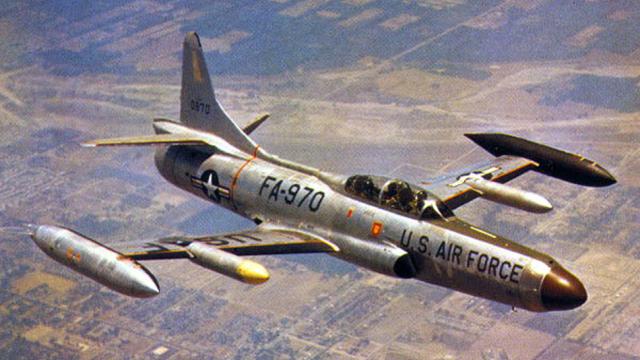When the Soviet Tupolev Tu-4 bomber made its debut in 1949, it was more than a big deal. This reverse-engineered Boeing B-29 Superfortress gave the Russians intercontinental strategic strike capabilities that the existing US fleet of F-61 Black Widows and F-82 Twin Mustangs simply couldn’t compete with. The American response: Build a better interceptor. Enter the F-94 Starfire.
Developed in 1948 by the USAF in direct response to the the Tu-4 threat, the Starfire is the direct descendent of America’s very first jet fighter, the F-80 Shooting Star (though some inspiration also came from the later T-33A Shooting Star). In fact, the Starfire’s design is based on the two-seat trainer iteration of the F-80, and early F-94’s shared three-quarters of the same parts, which made converting them a simple matter and drastically reduced production costs.

The first prototype of the F-94, dubbed the YF-94A, replaced the existing F-80’s engine with an 7321Nm (8134Nm with afterburning) Allison J33-A-33 jet engine. The subsequent two F-94 iterations, A and B, both utilised this engine, making the F-94 the first full-production US aircraft to feature afterburners. In addition, the early F-94s were equipped with a pair of .50 cal, fuselage-mounted Browning machine guns, and could swap their 625-litre wingtip fuel tanks for 450kg bombs, turning them into supersonic bombers, although this didn’t happen often, and only 109 such bombers were ever produced. The F-94A entered service in 1951. In all, 356 F-94A/B’s were produced.

The most well-known and well-used Starfire is the F-94C, though it bares such little resemblance to its precursors the the 94C was nearly designated to an entirely new family of F-97s. See, the USAF was none too impressed with the first two F-94s so Lockheed Martin, the defence contractor charged with their development, completely overhauled the platform for the 94C. It featured thinner, stronger wings, a swept tail, and bigger Pratt & Whitney J48 afterburning jet engine.
The 94C also received an upgraded fire control system and nose-mounted radar, though the plane flew so fast the onboard radar could was only effective at the terminal portion of the intercept and had to be guided by a ground-based data link (yet another first) for the rest of the mission. In all, the 14m long (11m wingspan) aircraft could be counted on to hit a top speed of 1030km/h, with a 16km service ceiling and a range of 2052km.
Interestingly, the F-94C wasn’t equipped with guns. The Brownings were removed in favour of an array of 48, 2.75-inch Folding Fin Air Rockets, early precursors to the unguided 70mm Hydra Rocket, in flip-up panels around the nose and under the wings. Unfortunately, the exhaust from nose-mounted rockets, under certain conditions, could cause the plane’s engines to flameout (when the pilot light of a jet engine is extinguished) and the jet to crash. Hence, the addition of the under-wing armament and judicious use of the nose flaps.

Despite all of the F-94’s revolutionary technologies, it fell victim to a quickening Cold War arms race. By the mid-1950s, guided air-to-air missiles were clearly the future of aerial combat, capable of locking onto and chasing down enemy craft while the F-94’s rockets only flew in a straight line. Luckily, we never had to find out if these could indeed take out a wing of nuke-toting Superfortress ripoffs. [Wikipedia – National USAF Museum – Aviation Intel – Aviation Enthusiast Corner]
Pictures: USAF
